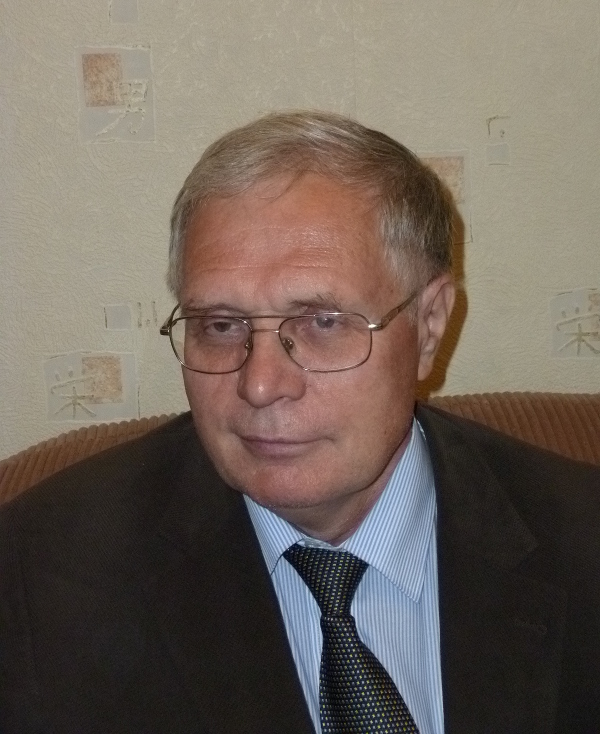
|

|
VIII-th International Conference "SOLITONS, COLLAPSES AND TURBULENCE: Achievements, Developments and Perspectives" (SCT-17) in honor of Evgeny Kuznetsov's 70th birthday
May, 21-25, 2017 Chernogolovka, Russia |
Nonlocal effects in transport: The role of turbulence energy
Abstract:
Nonlocal effects in transport: The role of turbulence energy.
Volker Naulin1, Farah Hariri2, Jens Juul Rasmussen1
1. Institute of Physics, Technical University of Denmark, DTU, 2800 Lyngby, Denmark
2. CERN, Physics Department, CH-1211, Geneva 23, Switzerland
Classical approaches to turbulent transport start from the observation that the free energy available in gradients of the plasma pressure or the magnetic field can be relaxed into turbulent field fluctuations. These fluctuations in turn facilitate the reduction of the gradients towards criticality by transporting the driving quantity down the gradient. The transport arising at one point in space is then characterised by the local gradients and values of the plasma parameters. The transport can consequently be expressed in terms of a diffusion coefficient and a turbulent pinch or advection velocity. This picture has been in general very successful, however, we know situations which pose problems to this treatment of turbulence, namely as a cause to local transport.
In situations where the turbulence is strong, significant amounts of energy can be stored in the turbulence field. In addition to facilitating transport, these situations give rise to important feedback mechanisms concerning the turbulence itself [1]. These effects start with the condensation of turbulent energy into zonal, eg. perpendicular to the gradients, flows [2]. Also, as the turbulence energy itself is transported, this introduces an additional transport process. This often ?hidden? transport channel can lead to fast signal propagation through the observed medium, which is in classical transport theory heuristically expressed as a nonlocal effect. Finally, in situations with sub- and supercritical gradients the turbulent energy can be transported into the sub-critical region and there perform work by being exhausted on building up the gradient towards the critical one [3].
We will show examples of these situations and argue why the turbulent energy field should be treated as a transported quantity itself. Specifically we discuss up-gradient transport and nonlocality in the context of plasma turbulence.
[1] Turbulence spreading, anomalous transport, and pinch effect
Naulin, V; Nielsen, AH; Rasmussen, JJ
PHYSICS OF PLASMAS 12 122306 2005
[2] Gyrofluid potential vorticity equation and turbulent equipartion states
Madsen, J.; Rasmussen, J. Juul; Naulin, V.; et al.
PLASMA PHYSICS AND CONTROLLED FUSION 57 054016 2015
[3] Cold pulse and rotation reversals with turbulence spreading and residual stress
Hariri, F.; Naulin, V.; Rasmussen, J. Juul; et al.
PHYSICS OF PLASMAS 23 052512 2016
Volker Naulin1, Farah Hariri2, Jens Juul Rasmussen1
1. Institute of Physics, Technical University of Denmark, DTU, 2800 Lyngby, Denmark
2. CERN, Physics Department, CH-1211, Geneva 23, Switzerland
Classical approaches to turbulent transport start from the observation that the free energy available in gradients of the plasma pressure or the magnetic field can be relaxed into turbulent field fluctuations. These fluctuations in turn facilitate the reduction of the gradients towards criticality by transporting the driving quantity down the gradient. The transport arising at one point in space is then characterised by the local gradients and values of the plasma parameters. The transport can consequently be expressed in terms of a diffusion coefficient and a turbulent pinch or advection velocity. This picture has been in general very successful, however, we know situations which pose problems to this treatment of turbulence, namely as a cause to local transport.
In situations where the turbulence is strong, significant amounts of energy can be stored in the turbulence field. In addition to facilitating transport, these situations give rise to important feedback mechanisms concerning the turbulence itself [1]. These effects start with the condensation of turbulent energy into zonal, eg. perpendicular to the gradients, flows [2]. Also, as the turbulence energy itself is transported, this introduces an additional transport process. This often ?hidden? transport channel can lead to fast signal propagation through the observed medium, which is in classical transport theory heuristically expressed as a nonlocal effect. Finally, in situations with sub- and supercritical gradients the turbulent energy can be transported into the sub-critical region and there perform work by being exhausted on building up the gradient towards the critical one [3].
We will show examples of these situations and argue why the turbulent energy field should be treated as a transported quantity itself. Specifically we discuss up-gradient transport and nonlocality in the context of plasma turbulence.
[1] Turbulence spreading, anomalous transport, and pinch effect
Naulin, V; Nielsen, AH; Rasmussen, JJ
PHYSICS OF PLASMAS 12 122306 2005
[2] Gyrofluid potential vorticity equation and turbulent equipartion states
Madsen, J.; Rasmussen, J. Juul; Naulin, V.; et al.
PLASMA PHYSICS AND CONTROLLED FUSION 57 054016 2015
[3] Cold pulse and rotation reversals with turbulence spreading and residual stress
Hariri, F.; Naulin, V.; Rasmussen, J. Juul; et al.
PHYSICS OF PLASMAS 23 052512 2016
Authors
(no additional information)(no additional information)
(no additional information)
Contact webmaster
